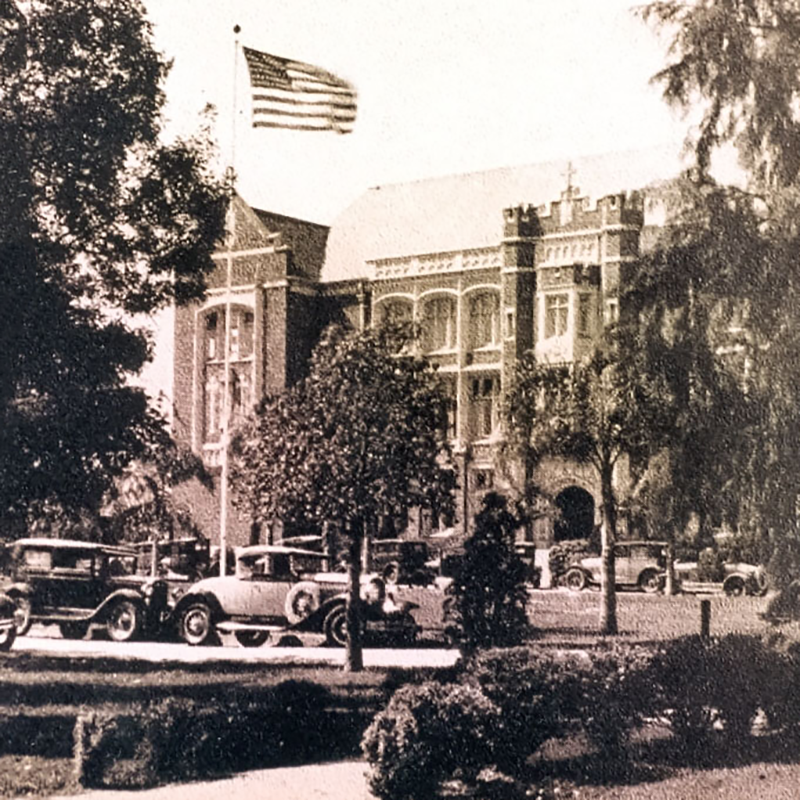
Our law school began its life as the St. Vincent’s School of Law, founded in 1920. The law school was part of St. Vincent’s college, which the Jesuits had assumed control of in 1911. When the Jesuits later changed the name of St. Vincent’s College to Loyola College, the name of St. Vincent’s was retained for the law school. The college and law school were housed in the together in an impressive Gothic-revival building on Venice Boulevard (which today is the home of Loyola High School).
Wednesday, September 8, 1920, was the first day of classes for the new St. Vincent’s School of Law. The law school began as a part-time evening program, with no full-time faculty, no permanent administration and a very small collection of library books. Students were expected to graduate in four years, and would be awarded a Bachelor of Laws (LL.B) degree. This was in an era were a college degree was not a prerequisite for admission to law school. In fact, some students at Loyola College were in fact also taking law school classes in the evening.
Tuition for the entering class of 1920 was $90 per year. Even this very reasonable sounding amount was too much for many students at the time. Alumni from the period recall that Loyola College was very generous in extending loans for tuition, ensuring that a legal education was not denied to persons with limited means.
Since its inception, the school was able to attract very prominent attorneys into its faculty. One such faculty member was William Joseph Ford, who had gained national fame for being the prosecuting attorney in the case against the McNamara Brothers, who were accused of bombing the Los Angeles Times building in 1910. Ford became the school’s first Dean in 1923.
The new school quickly thrived, expanding from an entering class of eight students in 1920 to a student body of over 150 by 1925.All eight students of the 1920 class went on to graduate in 1924.While the student body was primarily male, there were two women in the entering class of 1927 and six women in the 1928 class.
The new law school also sought to distinguish itself by the range of classes offered to its students. Literature from the school’s first year of operation states: “The School of Law is different from other law schools in prescribing courses in Logic, Legal Ethics, Natural Law, Rational Psychology, and Metaphysics.” This may reflect the fact that three Jesuit scholars were on the faculty in the early years. A review of the catalog of classes offered in the 1930’s reveals, however, that these non-law courses had been dropped in favor of a much more standard curriculum.
The 1920’s was also the period when Father Joseph Donovan became associated with the law school. Father Donovan became “Regent” of the school in 1927, a title associated with the Jesuit Order. For the next forty years, Father Donovan played a very prominent role in the operation of the law school and in the local legal community. He was especially active in the day-to-day running of the school, leaving more academic matters to the law deans. Admission to the law school was partly determined by the score on Father Donovan’s “legal aptitude test,” which he had personally drafted.
The law school had a very successful launch at its Venice Boulevard home. A criticism of the location, however, was its perceived distance from Los Angeles’ downtown core. Since the law teachers of that era were primarily practicing attorneys, they had to use the trolley cars to take them from their downtown law offices to the law school. This need encouraged the school’s leaders to begin looking for a new home.